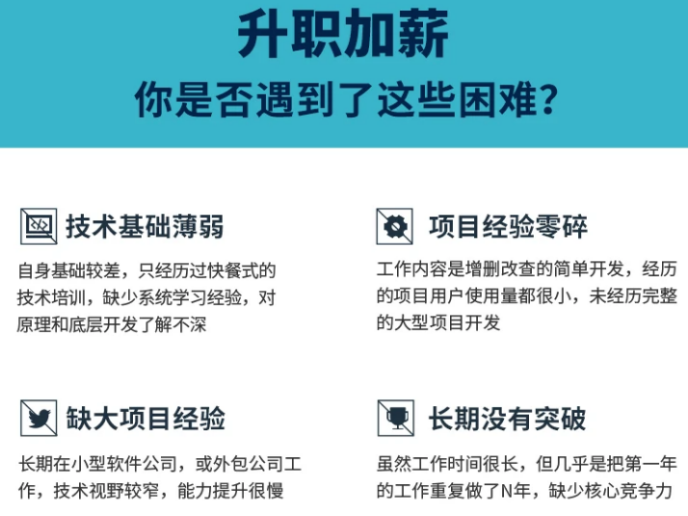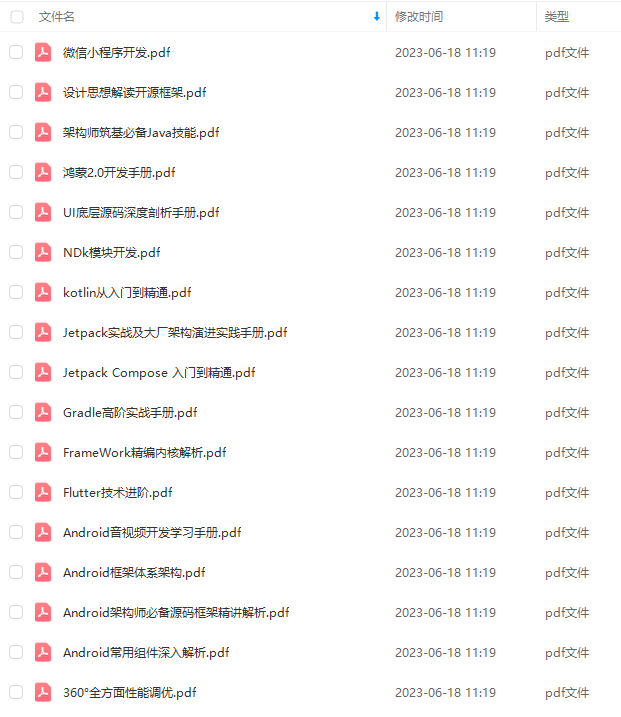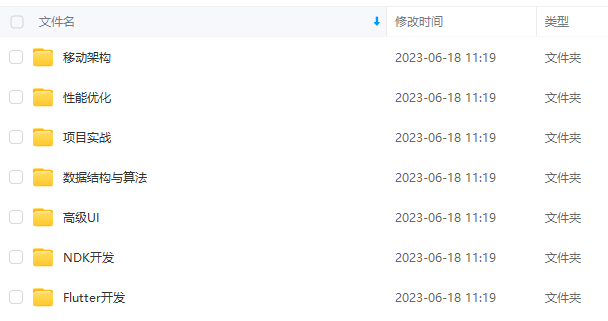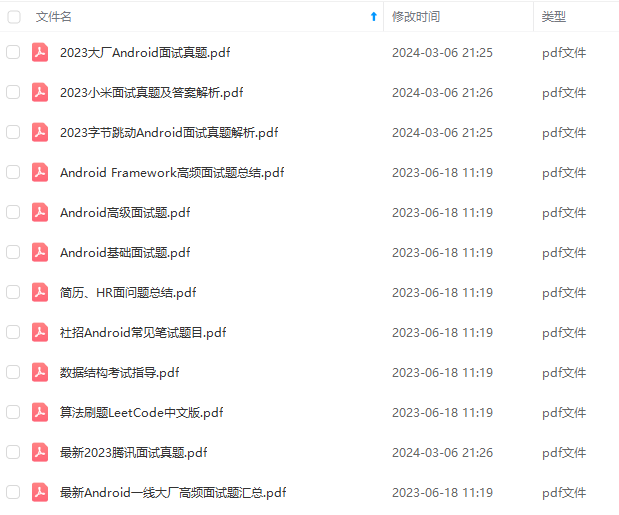let time = new Date(timeTicks);
this.dataPoints_.push(new DataPoint(time, value));
if (this.dataPoints_.length > MAX_STATS_DATA_POINT_BUFFER_SIZE) {
this.dataPoints_.shift();
}
},
isVisible: function() {
return this.isVisible_;
},
show: function(isVisible) {
this.isVisible_ = isVisible;
},
getColor: function() {
return this.color_;
},
setColor: function(color) {
this.color_ = color;
},
getCount: function() {
return this.dataPoints_.length;
},
/**
-
Returns a list containing the values of the data series at |count|
-
points, starting at |startTime|, and |stepSize| milliseconds apart.
-
Caches values, so showing/hiding individual data series is fast.
*/
getValues: function(startTime, stepSize, count) {
// Use cached values, if we can.
if (this.cacheStartTime_ === startTime &&
this.cacheStepSize_ === stepSize &&
this.cacheValues_.length === count) {
return this.cacheValues_;
}
// Do all the work.
this.cacheValues_ = this.getValuesInternal_(startTime, stepSize, count);
this.cacheStartTime_ = startTime;
this.cacheStepSize_ = stepSize;
return this.cacheValues_;
},
/**
- Returns the cached |values| in the specified time period.
*/
getValuesInternal_: function(startTime, stepSize, count) {
let values = [];
let nextPoint = 0;
let currentValue = 0;
let time = startTime;
for (let i = 0; i < count; ++i) {
while (nextPoint < this.dataPoints_.length &&
this.dataPoints_[nextPoint].time < time) {
currentValue = this.dataPoints_[nextPoint].value;
++nextPoint;
}
values[i] = currentValue;
time += stepSize;
}
return values;
}
};
/**
-
A single point in a data series. Each point has a time, in the form of
-
milliseconds since the Unix epoch, and a numeric value.
-
@constructor
*/
function DataPoint(time, value) {
this.time = time;
this.value = value;
}
return TimelineDataSeries;
})();
const TimelineGraphView = (function() {
// Maximum number of labels placed vertically along the sides of the graph.
let MAX_VERTICAL_LABELS = 6;
// Vertical spacing between labels and between the graph and labels.
let LABEL_VERTICAL_SPACING = 4;
// Horizontal spacing between vertically placed labels and the edges of the
// graph.
let LABEL_HORIZONTAL_SPACING = 3;
// Horizintal spacing between two horitonally placed labels along the bottom
// of the graph.
// var LABEL_LABEL_HORIZONTAL_SPACING = 25;
// Length of ticks, in pixels, next to y-axis labels. The x-axis only has
// one set of labels, so it can use lines instead.
let Y_AXIS_TICK_LENGTH = 10;
let GRID_COLOR = ‘#CCC’;
let TEXT_COLOR = ‘#000’;
let BACKGROUND_COLOR = ‘#FFF’;
let MAX_DECIMAL_PRECISION = 2;
/**
- @constructor
*/
function TimelineGraphView(divId, canvasId) {
this.scrollbar_ = {position_: 0, range_: 0};
this.graphDiv_ = document.getElementById(divId);
this.canvas_ = document.getElementById(canvasId);
// Set the range and scale of the graph. Times are in milliseconds since
// the Unix epoch.
// All measurements we have must be after this time.
this.startTime_ = 0;
// The current rightmost position of the graph is always at most this.
this.endTime_ = 1;
this.graph_ = null;
// Horizontal scale factor, in terms of milliseconds per pixel.
this.scale_ = 1000;
// Initialize the scrollbar.
this.updateScrollbarRange_(true);
}
TimelineGraphView.prototype = {
setScale: function(scale) {
this.scale_ = scale;
},
// Returns the total length of the graph, in pixels.
getLength_: function() {
let timeRange = this.endTime_ - this.startTime_;
// Math.floor is used to ignore the last partial area, of length less
// than this.scale_.
return Math.floor(timeRange / this.scale_);
},
/**
- Returns true if the graph is scrolled all the way to the right.
*/
graphScrolledToRightEdge_: function() {
return this.scrollbar_.position_ === this.scrollbar_.range_;
},
/**
-
Update the range of the scrollbar. If |resetPosition| is true, also
-
sets the slider to point at the rightmost position and triggers a
-
repaint.
*/
updateScrollbarRange_: function(resetPosition) {
let scrollbarRange = this.getLength_() - this.canvas_.width;
if (scrollbarRange < 0) {
scrollbarRange = 0;
}
// If we’ve decreased the range to less than the current scroll position,
// we need to move the scroll position.
if (this.scrollbar_.position_ > scrollbarRange) {
resetPosition = true;
}
this.scrollbar_.range_ = scrollbarRange;
if (resetPosition) {
this.scrollbar_.position_ = scrollbarRange;
this.repaint();
}
},
/**
-
Sets the date range displayed on the graph, switches to the default
-
scale factor, and moves the scrollbar all the way to the right.
*/
setDateRange: function(startDate, endDate) {
this.startTime_ = startDate.getTime();
this.endTime_ = endDate.getTime();
// Safety check.
if (this.endTime_ <= this.startTime_) {
this.startTime_ = this.endTime_ - 1;
}
this.updateScrollbarRange_(true);
},
/**
-
Updates the end time at the right of the graph to be the current time.
-
Specifically, updates the scrollbar’s range, and if the scrollbar is
-
all the way to the right, keeps it all the way to the right. Otherwise,
-
leaves the view as-is and doesn’t redraw anything.
*/
updateEndDate: function(optDate) {
this.endTime_ = optDate || (new Date()).getTime();
this.updateScrollbarRange_(this.graphScrolledToRightEdge_());
},
getStartDate: function() {
return new Date(this.startTime_);
},
/**
- Replaces the current TimelineDataSeries with |dataSeries|.
*/
setDataSeries: function(dataSeries) {
// Simply recreates the Graph.
this.graph_ = new Graph();
for (let i = 0; i < dataSeries.length; ++i) {
this.graph_.addDataSeries(dataSeries[i]);
}
this.repaint();
},
/**
- Adds |dataSeries| to the current graph.
*/
addDataSeries: function(dataSeries) {
if (!this.graph_) {
this.graph_ = new Graph();
}
this.graph_.addDataSeries(dataSeries);
this.repaint();
},
/**
- Draws the graph on |canvas_|.
*/
repaint: function() {
this.repaintTimerRunning_ = false;
let width = this.canvas_.width;
let height = this.canvas_.height;
let context = this.canvas_.getContext(‘2d’);
// Clear the canvas.
context.fillStyle = BACKGROUND_COLOR;
context.fillRect(0, 0, width, height);
// Try to get font height in pixels. Needed for layout.
let fontHeightString = context.font.match(/([0-9]+)px/)[1];
let fontHeight = parseInt(fontHeightString);
// Safety check, to avoid drawing anything too ugly.
if (fontHeightString.length === 0 || fontHeight <= 0 ||
fontHeight * 4 > height || width < 50) {
return;
}
// Save current transformation matrix so we can restore it later.
context.save();
// The center of an HTML canvas pixel is technically at (0.5, 0.5). This
// makes near straight lines look bad, due to anti-aliasing. This
// translation reduces the problem a little.
context.translate(0.5, 0.5);
// Figure out what time values to display.
let position = this.scrollbar_.position_;
// If the entire time range is being displayed, align the right edge of
// the graph to the end of the time range.
if (this.scrollbar_.range_ === 0) {
position = this.getLength_() - this.canvas_.width;
}
let visibleStartTime = this.startTime_ + position * this.scale_;
// Make space at the bottom of the graph for the time labels, and then
// draw the labels.
let textHeight = height;
height -= fontHeight + LABEL_VERTICAL_SPACING;
this.drawTimeLabels(context, width, height, textHeight, visibleStartTime);
// Draw outline of the main graph area.
context.strokeStyle = GRID_COLOR;
context.strokeRect(0, 0, width - 1, height - 1);
if (this.graph_) {
// Layout graph and have them draw their tick marks.
this.graph_.layout(
width, height, fontHeight, visibleStartTime, this.scale_);
this.graph_.drawTicks(context);
// Draw the lines of all graphs, and then draw their labels.
this.graph_.drawLines(context);
this.graph_.drawLabels(context);
}
// Restore original transformation matrix.
context.restore();
},
/**
-
Draw time labels below the graph. Takes in start time as an argument
-
since it may not be |startTime_|, when we’re displaying the entire
-
time range.
*/
drawTimeLabels: function(context, width, height, textHeight, startTime) {
// Draw the labels 1 minute apart.
let timeStep = 1000 * 60;
// Find the time for the first label. This time is a perfect multiple of
// timeStep because of how UTC times work.
let time = Math.ceil(startTime / timeStep) * timeStep;
context.textBaseline = ‘bottom’;
context.textAlign = ‘center’;
context.fillStyle = TEXT_COLOR;
context.strokeStyle = GRID_COLOR;
// Draw labels and vertical grid lines.
while (true) {
let x = Math.round((time - startTime) / this.scale_);
if (x >= width) {
break;
}
let text = (new Date(time)).toLocaleTimeString();
context.fillText(text, x, textHeight);
context.beginPath();
context.lineTo(x, 0);
context.lineTo(x, height);
context.stroke();
time += timeStep;
}
},
getDataSeriesCount: function() {
if (this.graph_) {
return this.graph_.dataSeries_.length;
}
return 0;
},
hasDataSeries: function(dataSeries) {
if (this.graph_) {
return this.graph_.hasDataSeries(dataSeries);
}
return false;
},
};
/**
-
A Graph is responsible for drawing all the TimelineDataSeries that have
-
the same data type. Graphs are responsible for scaling the values, laying
-
out labels, and drawing both labels and lines for its data series.
*/
const Graph = (function() {
/**
- @constructor
*/
function Graph() {
this.dataSeries_ = [];
// Cached properties of the graph, set in layout.
this.width_ = 0;
this.height_ = 0;
this.fontHeight_ = 0;
this.startTime_ = 0;
this.scale_ = 0;
// The lowest/highest values adjusted by the vertical label step size
// in the displayed range of the graph. Used for scaling and setting
// labels. Set in layoutLabels.
this.min_ = 0;
this.max_ = 0;
// Cached text of equally spaced labels. Set in layoutLabels.
this.labels_ = [];
}
/**
-
A Label is the label at a particular position along the y-axis.
-
@constructor
*/
/*
function Label(height, text) {
this.height = height;
this.text = text;
}
*/
Graph.prototype = {
addDataSeries: function(dataSeries) {
this.dataSeries_.push(dataSeries);
},
hasDataSeries: function(dataSeries) {
for (let i = 0; i < this.dataSeries_.length; ++i) {
if (this.dataSeries_[i] === dataSeries) {
return true;
}
}
return false;
},
/**
-
Returns a list of all the values that should be displayed for a given
-
data series, using the current graph layout.
*/
getValues: function(dataSeries) {
if (!dataSeries.isVisible()) {
return null;
}
return dataSeries.getValues(this.startTime_, this.scale_, this.width_);
},
/**
-
Updates the graph’s layout. In particular, both the max value and
-
label positions are updated. Must be called before calling any of the
-
drawing functions.
*/
layout: function(width, height, fontHeight, startTime, scale) {
this.width_ = width;
this.height_ = height;
this.fontHeight_ = fontHeight;
this.startTime_ = startTime;
this.scale_ = scale;
// Find largest value.
let max = 0;
let min = 0;
for (let i = 0; i < this.dataSeries_.length; ++i) {
let values = this.getValues(this.dataSeries_[i]);
if (!values) {
continue;
}
for (let j = 0; j < values.length; ++j) {
if (values[j] > max) {
max = values[j];
} else if (values[j] < min) {
min = values[j];
}
}
}
this.layoutLabels_(min, max);
},
/**
-
Lays out labels and sets |max_|/|min_|, taking the time units into
-
consideration. |maxValue| is the actual maximum value, and
-
|max_| will be set to the value of the largest label, which
-
will be at least |maxValue|. Similar for |min_|.
*/
layoutLabels_: function(minValue, maxValue) {
if (maxValue - minValue < 1024) {
this.layoutLabelsBasic_(minValue, maxValue, MAX_DECIMAL_PRECISION);
return;
}
// Find appropriate units to use.
let units = [‘’, ‘k’, ‘M’, ‘G’, ‘T’, ‘P’];
// Units to use for labels. 0 is ‘1’, 1 is K, etc.
// We start with 1, and work our way up.
let unit = 1;
minValue /= 1024;
maxValue /= 1024;
while (units[unit + 1] && maxValue - minValue >= 1024) {
minValue /= 1024;
maxValue /= 1024;
++unit;
}
// Calculate labels.
this.layoutLabelsBasic_(minValue, maxValue, MAX_DECIMAL_PRECISION);
// Append units to labels.
for (let i = 0; i < this.labels_.length; ++i) {
this.labels_[i] += ’ ’ + units[unit];
}
// Convert |min_|/|max_| back to unit ‘1’.
this.min_ *= Math.pow(1024, unit);
this.max_ *= Math.pow(1024, unit);
},
/**
-
Same as layoutLabels_, but ignores units. |maxDecimalDigits| is the
-
maximum number of decimal digits allowed. The minimum allowed
-
difference between two adjacent labels is 10^-|maxDecimalDigits|.
*/
layoutLabelsBasic_: function(minValue, maxValue, maxDecimalDigits) {
this.labels_ = [];
let range = maxValue - minValue;
// No labels if the range is 0.
if (range === 0) {
this.min_ = this.max_ = maxValue;
return;
}
// The maximum number of equally spaced labels allowed. |fontHeight_|
// is doubled because the top two labels are both drawn in the same
// gap.
let minLabelSpacing = 2 * this.fontHeight_ + LABEL_VERTICAL_SPACING;
// The + 1 is for the top label.
let maxLabels = 1 + this.height_ / minLabelSpacing;
if (maxLabels < 2) {
maxLabels = 2;
} else if (maxLabels > MAX_VERTICAL_LABELS) {
maxLabels = MAX_VERTICAL_LABELS;
}
// Initial try for step size between conecutive labels.
let stepSize = Math.pow(10, -maxDecimalDigits);
// Number of digits to the right of the decimal of |stepSize|.
// Used for formating label strings.
let stepSizeDecimalDigits = maxDecimalDigits;
// Pick a reasonable step size.
while (true) {
// If we use a step size of |stepSize| between labels, we’ll need:
//
// Math.ceil(range / stepSize) + 1
//
// labels. The + 1 is because we need labels at both at 0 and at
// the top of the graph.
// Check if we can use steps of size |stepSize|.
if (Math.ceil(range / stepSize) + 1 <= maxLabels) {
break;
}
// Check |stepSize| * 2.
if (Math.ceil(range / (stepSize * 2)) + 1 <= maxLabels) {
stepSize *= 2;
break;
}
// Check |stepSize| * 5.
if (Math.ceil(range / (stepSize * 5)) + 1 <= maxLabels) {
stepSize *= 5;
break;
}
stepSize *= 10;
if (stepSizeDecimalDigits > 0) {
–stepSizeDecimalDigits;
}
}
// Set the min/max so it’s an exact multiple of the chosen step size.
this.max_ = Math.ceil(maxValue / stepSize) * stepSize;
this.min_ = Math.floor(minValue / stepSize) * stepSize;
// Create labels.
for (let label = this.max_; label >= this.min_; label -= stepSize) {
this.labels_.push(label.toFixed(stepSizeDecimalDigits));
}
},
/**
- Draws tick marks for each of the labels in |labels_|.
*/
drawTicks: function(context) {
let x1;
let x2;
x1 = this.width_ - 1;
x2 = this.width_ - 1 - Y_AXIS_TICK_LENGTH;
context.fillStyle = GRID_COLOR;
context.beginPath();
for (let i = 1; i < this.labels_.length - 1; ++i) {
// The rounding is needed to avoid ugly 2-pixel wide anti-aliased
// lines.
let y = Math.round(this.height_ * i / (this.labels_.length - 1));
context.moveTo(x1, y);
context.lineTo(x2, y);
}
context.stroke();
},
/**
- Draws a graph line for each of the data series.
*/
drawLines: function(context) {
// Factor by which to scale all values to convert them to a number from
// 0 to height - 1.
let scale = 0;
let bottom = this.height_ - 1;
if (this.max_) {
scale = bottom / (this.max_ - this.min_);
}
// Draw in reverse order, so earlier data series are drawn on top of
// subsequent ones.
for (let i = this.dataSeries_.length - 1; i >= 0; --i) {
let values = this.getValues(this.dataSeries_[i]);
if (!values) {
continue;
}
context.strokeStyle = this.dataSeries_[i].getColor();
context.beginPath();
for (let x = 0; x < values.length; ++x) {
// The rounding is needed to avoid ugly 2-pixel wide anti-aliased
// horizontal lines.
context.lineTo(
x, bottom - Math.round((values[x] - this.min_) * scale));
}
context.stroke();
}
},
/**
- Draw labels in |labels_|.
*/
drawLabels: function(context) {
if (this.labels_.length === 0) {
return;
}
let x = this.width_ - LABEL_HORIZONTAL_SPACING;
// Set up the context.
context.fillStyle = TEXT_COLOR;
context.textAlign = ‘right’;
// Draw top label, which is the only one that appears below its tick
// mark.
context.textBaseline = ‘top’;
context.fillText(this.labels_[0], x, 0);
// Draw all the other labels.
context.textBaseline = ‘bottom’;
let step = (this.height_ - 1) / (this.labels_.length - 1);
for (let i = 1; i < this.labels_.length; ++i) {
context.fillText(this.labels_[i], x, step * i);
}
}
};
return Graph;
})();
return TimelineGraphView;
})();
- js
‘use strict’
var localVideo = document.querySelector(‘video#localvideo’);
var remoteVideo = document.querySelector(‘video#remotevideo’);
var btnConn = document.querySelector(‘button#connserver’);
var btnLeave = document.querySelector(‘button#leave’);
var optBw = document.querySelector(‘select#bandwidth’)
var localStream = null;
var roomid = ‘444444’;
var socket =null;
var state = ‘init’;
var pc = null;
var lastResult;
var packetGraph;
var packetSeries;
var bitrateGraph;
var bitrateSeries;
var pcConfig={
‘iceServers’:[{
‘urls’:‘turn:121.41.76.43:3478’,
‘credential’:‘123456’,
‘username’:‘huang’
}]
}
function sendMessage(roomid,data){
if(socket){
socket.emit(‘message’,roomid,data);
}
自我介绍一下,小编13年上海交大毕业,曾经在小公司待过,也去过华为、OPPO等大厂,18年进入阿里一直到现在。
深知大多数初中级安卓工程师,想要提升技能,往往是自己摸索成长,但自己不成体系的自学效果低效又漫长,而且极易碰到天花板技术停滞不前!
因此收集整理了一份《2024年最新Android移动开发全套学习资料》送给大家,初衷也很简单,就是希望能够帮助到想自学提升又不知道该从何学起的朋友,同时减轻大家的负担。




由于文件比较大,这里只是将部分目录截图出来,每个节点里面都包含大厂面经、学习笔记、源码讲义、实战项目、讲解视频
如果你觉得这些内容对你有帮助,可以添加下面V无偿领取!(备注Android)

- js
‘use strict’
var localVideo = document.querySelector(‘video#localvideo’);
var remoteVideo = document.querySelector(‘video#remotevideo’);
var btnConn = document.querySelector(‘button#connserver’);
var btnLeave = document.querySelector(‘button#leave’);
var optBw = document.querySelector(‘select#bandwidth’)
var localStream = null;
var roomid = ‘444444’;
var socket =null;
var state = ‘init’;
var pc = null;
var lastResult;
var packetGraph;
var packetSeries;
var bitrateGraph;
var bitrateSeries;
var pcConfig={
‘iceServers’:[{
‘urls’:‘turn:121.41.76.43:3478’,
‘credential’:‘123456’,
‘username’:‘huang’
}]
}
function sendMessage(roomid,data){
if(socket){
socket.emit(‘message’,roomid,data);
}
自我介绍一下,小编13年上海交大毕业,曾经在小公司待过,也去过华为、OPPO等大厂,18年进入阿里一直到现在。
深知大多数初中级安卓工程师,想要提升技能,往往是自己摸索成长,但自己不成体系的自学效果低效又漫长,而且极易碰到天花板技术停滞不前!
因此收集整理了一份《2024年最新Android移动开发全套学习资料》送给大家,初衷也很简单,就是希望能够帮助到想自学提升又不知道该从何学起的朋友,同时减轻大家的负担。
[外链图片转存中…(img-cS70zhF5-1710929128248)]
[外链图片转存中…(img-V8TiDEaT-1710929128248)]
[外链图片转存中…(img-NUPKyzVp-1710929128249)]
[外链图片转存中…(img-DTo044y3-1710929128249)]
由于文件比较大,这里只是将部分目录截图出来,每个节点里面都包含大厂面经、学习笔记、源码讲义、实战项目、讲解视频
如果你觉得这些内容对你有帮助,可以添加下面V无偿领取!(备注Android)
[外链图片转存中…(img-OR8c1V9n-1710929128250)]






















 5518
5518











 被折叠的 条评论
为什么被折叠?
被折叠的 条评论
为什么被折叠?








